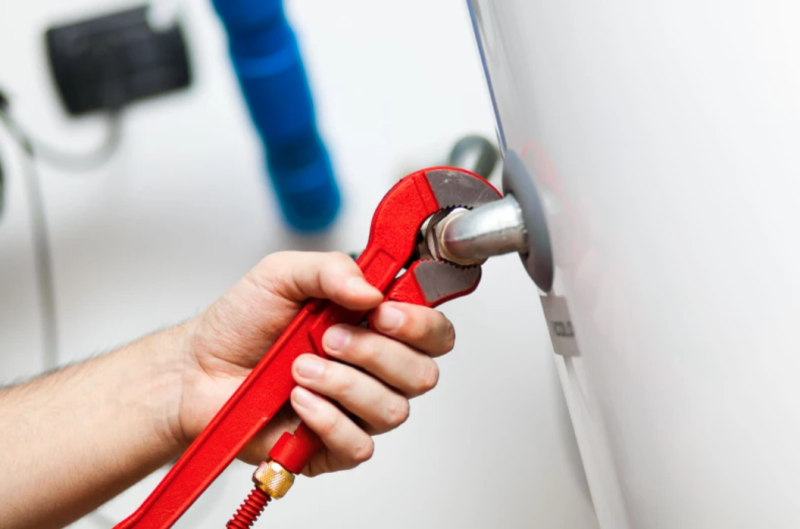Enhance your space with a quick and simple upgrade—changing your sink tapware. Whether it’s in the bustling heart of your kitchen or the serene ambiance of your bathroom, new tapware can make a world of difference. In this blog, we’ll explore some different tapware options and guide you through the process of changing your existing tapware.
Not into DIYs? That’s what we’re here for! If you want to upgrade your tapware, don’t hesitate to call upon the team at Swan’s Professional Plumbing for help!
Reasons to consider changing your tapware
Aesthetic upgrade
Changing your tapware is an easy and effective way to refresh the look of your kitchen or bathroom. New, stylish fixtures can instantly modernise the space or add a touch of timeless elegance.
Improved functionality
Upgrading to a more advanced or modern tap can enhance functionality. Features like pull-down or pull-out sprayers, touchless technology, or adjustable water flow can make daily tasks more convenient.
Water efficiency
Newer tapware often comes with water-saving features, contributing to environmental conservation and potentially reducing your water bills.
Corrosion or wear
Over time, taps can develop corrosion or wear, affecting their performance and appearance. Changing tapware can resolve issues like leaks, drips, or water stains.
Different types of tapware
The extent of the work will depend on the existing tapware in your sink. For example, the number of existing holes in your sink or countertop will influence your options for new tapware. If your current setup has a single-hole tap, transitioning to a different single-hole design is usually straightforward. However, if you’re considering a tap with more components (e.g., separate handles and spout), you might need additional holes, potentially requiring modifications to your sink or countertop.
Mixer taps
Mixer taps seamlessly blend hot and cold water through the same spout to provide a customised temperature, offering convenience and efficiency in kitchen and bathroom settings. There is one handle that controls the temperature as opposed to other types that have a separate hot and cold handle.
Wall mounted taps
Wall-mounted taps are fixtures fixed to the wall, freeing up countertop space and providing a sleek and modern aesthetic, often favoured in contemporary design schemes. These are typically used in bathrooms.
Pillar taps
Pillar taps are standalone taps with separate hot and cold water handles that are operated separately. Pillar taps are typically seen in older homes as they are becoming less popular.
How to change a kitchen tap
If you are changing to the same type of tap ie. replacing a mixer tap with a new mixer tap, the process is pretty straight forward. Here are the steps you would follow.
Step 1: Gather supplies and turn off water supply
Collect all necessary tools and materials. Shut off the water supply to the kitchen by turning off the isolation valves beneath the sink. This helps prevent water leakage during the tap replacement process.
You may require the following supplies depending on the type of tap:
- New kitchen tap
- Wrench
- Plumber’s tape
- Plunger or bucket (to catch water)
- Towels or rags
- Teflon tape
- Screwdriver
Step 2: Disconnect existing tap
Disconnect the supply lines from the existing tap using a wrench and / or screwdriver. Place a bucket to catch any remaining water in the lines.
Step 3: Remove the old tap
Loosen and remove the nuts securing the old tap to the sink. Then, lift the old tap out carefully.
Step 4: Clean the area
Wipe down the area around the tap holes to ensure a clean surface for the new tap installation.
Step 5: Install new tap
Place the new tap into the holes on the sink. Ensure it is properly aligned and centred.
Step 6: Secure new tap
Secure the new tap in place by tightening the nuts beneath the sink with an adjustable wrench. Be sure to not over-tighten to avoid damage.
Step 7: Connect water supply lines
Connect the hot and cold water supply lines to the corresponding valves on the new tap. Use Teflon tape on the threads to ensure a watertight seal.
Step 8: Turn on water supply
Slowly turn on the water supply valves beneath the sink. Check for any leaks and tighten connections if necessary.
Step 9: Check for leaks
Turn on the tap and check for leaks around the connections. If you notice any leaks, turn off the water supply and tighten the connections.
Step 10: Test the tap
Run both hot and cold water through the tap to ensure proper functionality. Check for smooth operation and make any necessary adjustments.
Need help changing your tapware? Call Swan’s Professional Plumbing today!
At Swan’s Professional Plumbing, we’re dedicated to being your local Perth plumber for life. Whether you need help changing a tap, have a plumbing problem or are thinking about starting a major plumbing renovation, we’re here to help! Don’t hesitate to call our friendly team on 1300 634 581 or by booking online.



